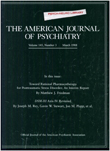Contrasting models for combined medical and psychiatric inpatient treatment
Abstract
The authors contrast the clinical, administrative, and reimbursement aspects of two units offering combined medical and psychiatric inpatient treatment, one under medical auspices (the medical/psychiatric model), the other under psychiatric auspices (the psychiatric/medical model). The typical patient on both units suffered from depression with prominent somatic symptoms. The psychiatric/medical model was clinically advantageous because of its greater capacity for containing agitated, psychotic, and suicidal behavior and because of its potentially longer lengths of stay for refractory patients. Furthermore, the psychiatric/medical model offers more predictable payment for psychotherapy under fee-for-service insurance and is less likely to be adversely affected by the current prospective payment system based on diagnosis-related groups.
Access content
To read the fulltext, please use one of the options below to sign in or purchase access.- Personal login
- Institutional Login
- Sign in via OpenAthens
- Register for access
-
Please login/register if you wish to pair your device and check access availability.
Not a subscriber?
PsychiatryOnline subscription options offer access to the DSM-5 library, books, journals, CME, and patient resources. This all-in-one virtual library provides psychiatrists and mental health professionals with key resources for diagnosis, treatment, research, and professional development.
Need more help? PsychiatryOnline Customer Service may be reached by emailing [email protected] or by calling 800-368-5777 (in the U.S.) or 703-907-7322 (outside the U.S.).



